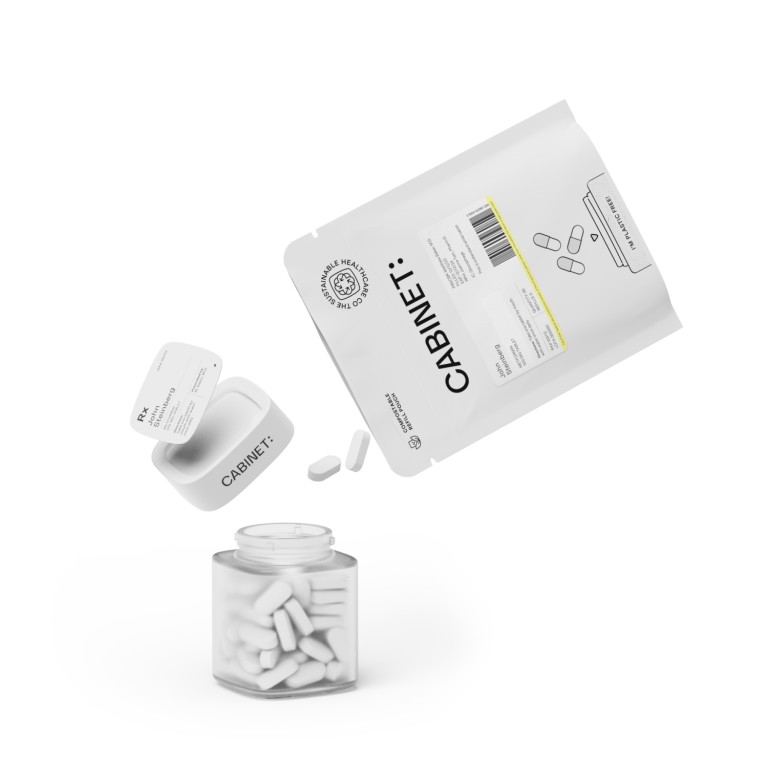Degenerative disc disease (DDD) is a common condition that affects the spine. It occurs when the discs that act as cushions between the vertebrae start to deteriorate. This can lead to chronic pain and reduced mobility. While there is no cure for DDD, medication can play a crucial role in managing the symptoms and improving the quality of life for patients.
Understanding Degenerative Disc Disease
Degenerative disc disease is a common condition that affects the spine. It is often caused by the natural aging process, but it can also be the result of injury or trauma to the spine. Over time, the discs in the spine lose their ability to retain moisture and become less flexible. This can lead to disc herniation, bone spurs, and other complications.
While degenerative disc disease is commonly associated with aging, it can also affect younger individuals. Genetic factors or excessive wear and tear on the spine can contribute to the development of this condition in younger people. The most common symptoms of degenerative disc disease include low back pain, neck pain, stiffness, and radiating pain that may extend to the arms or legs. Some patients may also experience numbness, tingling, or muscle weakness.
Causes of Degenerative Disc Disease
There are several factors that can contribute to the development of degenerative disc disease. As mentioned earlier, the natural aging process is a major cause. As we age, the discs in our spine lose their water content, making them less flexible and more prone to damage. In addition, injuries or trauma to the spine, such as from a car accident or a fall, can accelerate the degeneration of the discs.
Genetics also play a role in the development of degenerative disc disease. Some individuals may be genetically predisposed to have weaker discs, making them more susceptible to degeneration. Lifestyle factors, such as smoking and obesity, can also increase the risk of developing this condition.
Symptoms of Degenerative Disc Disease
The symptoms of degenerative disc disease can vary from person to person. In some cases, individuals may experience mild discomfort or stiffness in the affected area. Others may have more severe pain that limits their daily activities. The pain may be localized to the site of the affected disc or it may radiate to other areas of the body, such as the arms or legs.
In addition to pain, degenerative disc disease can also cause other symptoms. Some individuals may experience numbness or tingling in the affected area. Muscle weakness may also occur, making it difficult to perform certain movements or tasks.
Progression of Degenerative Disc Disease
Recent data shows that the progression of degenerative disc disease can vary from person to person. While some individuals may experience a gradual worsening of symptoms over time, others may have periods of remission or relatively stable symptoms. This variation in progression may be due to several factors.
One possible explanation is that the body has the ability to adapt to the changes in the spine. The surrounding muscles and ligaments may strengthen over time, providing additional support to the affected area. Additionally, proactive management strategies, such as physical therapy and lifestyle modifications, can help slow down the progression of the disease and alleviate symptoms.
It is important for individuals with degenerative disc disease to work closely with their healthcare providers to develop a personalized treatment plan. This may include a combination of pain management techniques, physical therapy exercises, and lifestyle modifications. By taking a proactive approach to managing this condition, individuals can improve their quality of life and minimize the impact of degenerative disc disease on their daily activities.
Non-Surgical Treatment Approaches
When it comes to managing degenerative disc disease, non-surgical treatment options are often the first line of defense. Physical therapy and exercise are commonly recommended as they can help improve strength, flexibility, and overall function.
Physical therapy programs for degenerative disc disease typically include a combination of stretching, strengthening, and aerobic exercises. These exercises are designed to target the specific muscles and structures surrounding the affected discs, helping to alleviate pain and improve mobility. The stretching exercises help to increase flexibility and reduce muscle tension, while the strengthening exercises focus on building up the muscles that support the spine. Aerobic exercises, such as walking or swimming, can help improve cardiovascular health and promote overall well-being.
In addition to the exercises, patients may also be taught proper body mechanics and postural awareness to prevent further damage to the spine. This includes learning how to lift objects correctly, maintaining a neutral spine while sitting or standing, and using ergonomic equipment to support the back during daily activities.
However, it is important to consult with a healthcare professional before starting any exercise regimen to ensure it is safe and appropriate for your specific condition. They can provide guidance on the types and intensity of exercises that would be most beneficial for you.
Lifestyle Changes and Home Remedies
In addition to physical therapy, lifestyle changes can also play a significant role in managing degenerative disc disease. One important aspect is maintaining a healthy weight. Excess weight puts additional stress on the spine, which can worsen symptoms and contribute to further degeneration of the discs. By adopting a healthy eating plan and engaging in regular physical activity, individuals can achieve and maintain a healthy weight, reducing the strain on their spine.
Practicing good posture is another lifestyle change that can help reduce stress on the spine. Slouching or hunching over can increase pressure on the discs, leading to pain and discomfort. By maintaining proper alignment and posture, individuals can distribute the load evenly across the spine, minimizing the risk of further degeneration.
Other home remedies, such as hot or cold therapy, may also provide temporary relief from symptoms. Applying a heating pad or taking a warm bath can help relax the muscles and increase blood flow to the affected area, reducing pain and stiffness. On the other hand, using an ice pack or cold compress can help numb the area and reduce inflammation. It is important to follow the recommended guidelines for applying heat or cold to avoid any skin damage.
Over-the-counter pain relievers, such as nonsteroidal anti-inflammatory drugs (NSAIDs), can also be used to manage pain and inflammation associated with degenerative disc disease. However, it is important to use these medications as directed and consult with a healthcare professional if symptoms persist or worsen.
Alternative therapies like acupuncture or chiropractic care may also be considered as part of a comprehensive treatment plan. These therapies aim to address imbalances in the body and promote natural healing. However, it is important to consult with a qualified practitioner and ensure they have experience in treating degenerative disc disease.
Over-the-Counter Medications for Pain Relief
When conservative treatment options alone are not enough to manage the pain associated with degenerative disc disease, over-the-counter medications can be considered.
Degenerative disc disease (DDD) is a condition that affects the intervertebral discs, causing them to deteriorate over time. This can result in chronic pain and discomfort, making it difficult for individuals to perform daily activities. While there is no cure for DDD, there are various treatment options available to help manage the symptoms.
One of the most commonly used treatment approaches for DDD is the use of over-the-counter medications. These medications can provide temporary relief from pain and inflammation, allowing individuals to better cope with their condition.
Nonsteroidal Anti-Inflammatory Drugs (NSAIDs)
Nonsteroidal anti-inflammatory drugs, commonly known as NSAIDs, are often the first choice for pain relief in DDD. These medications work by reducing inflammation and can help alleviate pain associated with muscle spasms or swelling around the affected discs. Examples of NSAIDs include ibuprofen, naproxen, and aspirin.
NSAIDs are available in various forms, including tablets, capsules, and topical creams. They are generally safe for short-term use, but prolonged or excessive use can lead to side effects such as stomach ulcers, kidney problems, and increased risk of heart attacks or strokes. It is important to follow the recommended dosage and consult with a healthcare professional if the pain persists or worsens.
In addition to their pain-relieving properties, NSAIDs can also help reduce inflammation, which is a common symptom of DDD. By reducing inflammation, these medications can provide long-lasting relief and improve the overall quality of life for individuals with DDD.
Acetaminophen
In cases where NSAIDs are not suitable or well-tolerated, acetaminophen can be an alternative. While acetaminophen does not have anti-inflammatory properties, it can help relieve pain and reduce fever. Acetaminophen works by blocking the production of certain chemicals in the brain that transmit pain signals.
Acetaminophen is available in various forms, including tablets, capsules, and liquid suspensions. It is generally considered safe when taken as directed, but exceeding the recommended dosage can cause liver damage. It is important to carefully read and follow the instructions on the packaging and consult with a healthcare professional if unsure.
Unlike NSAIDs, acetaminophen does not have the potential side effects of stomach ulcers or increased risk of heart attacks or strokes. However, it is still important to use acetaminophen responsibly and avoid exceeding the recommended dosage.
Overall, over-the-counter medications can provide temporary relief from the pain associated with degenerative disc disease. However, it is important to note that these medications only address the symptoms and do not treat the underlying cause of DDD. Therefore, it is crucial to consult with a healthcare professional for a comprehensive treatment plan that may include other interventions such as physical therapy, exercise, and lifestyle modifications.
Prescription Medications for Degenerative Disc Disease
In more severe cases, where non-surgical approaches and over-the-counter medications do not provide sufficient pain relief, prescription medications may be necessary.
Opioids and Narcotics
Opioids, such as codeine or oxycodone, are powerful pain medications that can be used for short-term pain relief in severe cases of degenerative disc disease. However, they come with a risk of dependency and other potential side effects. Therefore, they are usually prescribed cautiously and under close supervision by a healthcare professional.
Muscle Relaxants
Muscle relaxants can be prescribed to alleviate muscle spasms and reduce pain associated with degenerative disc disease. These medications work by calming the muscles and promoting relaxation. Commonly prescribed muscle relaxants include cyclobenzaprine and baclofen.
Antidepressants and Antiseizure Medications
Despite their primary use in mental health conditions and seizures, some antidepressants and antiseizure medications, such as amitriptyline or gabapentin, can be effective in managing chronic pain associated with degenerative disc disease. They work by altering the perception of pain signals in the nervous system.
Risks and Side Effects of Medications
While medications can provide relief for degenerative disc disease, it is important to be aware of the potential risks and side effects.
Understanding the Potential Risks
One potential risk of long-term medication use is dependency or addiction, particularly with opioids or narcotics. It is crucial to use these medications as prescribed and under close supervision. Other risks may include gastrointestinal complications, liver damage, or allergic reactions. Patients should always consult with their healthcare provider and closely monitor their medication use.
Managing Side Effects
However, most medications can cause side effects, and it is important to be aware of them. Common side effects of NSAIDs may include stomach upset, heartburn, or high blood pressure. Muscle relaxants can cause drowsiness or dizziness, while antidepressants and antiseizure medications may lead to changes in mood or sleep patterns. It is essential to communicate any concerns or side effects to a healthcare professional to ensure the best possible outcome.
In conclusion, medication options for degenerative disc disease can help manage the symptoms and improve the quality of life for patients. From nonsteroidal anti-inflammatory drugs to prescription medications, it is important to work closely with a healthcare professional to find the most appropriate and effective treatment plan. Additionally, staying informed about the potential risks and side effects of these medications is crucial for optimal management and long-term well-being.








